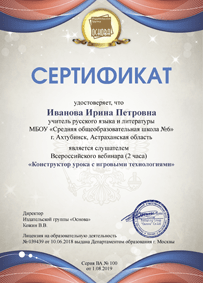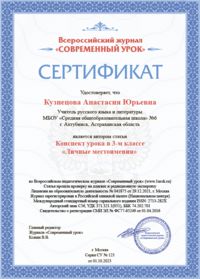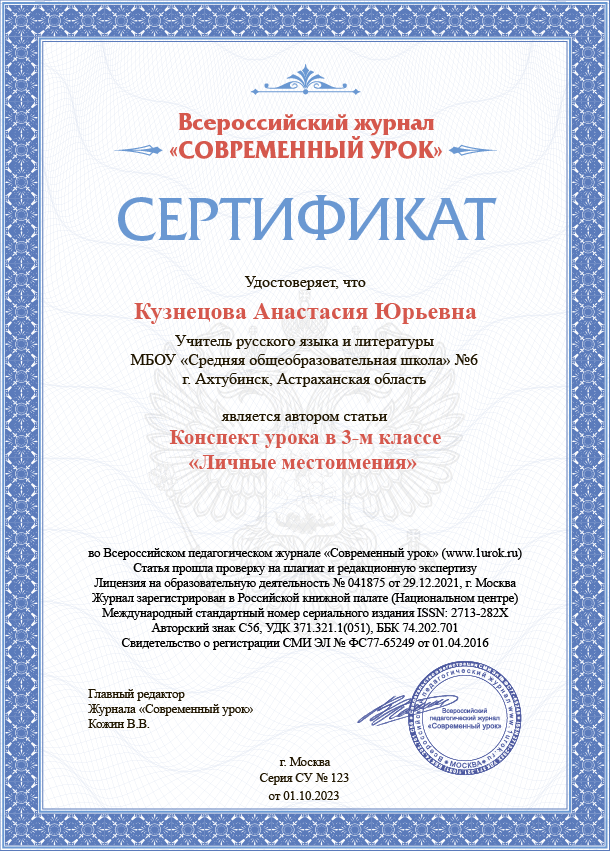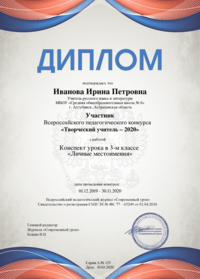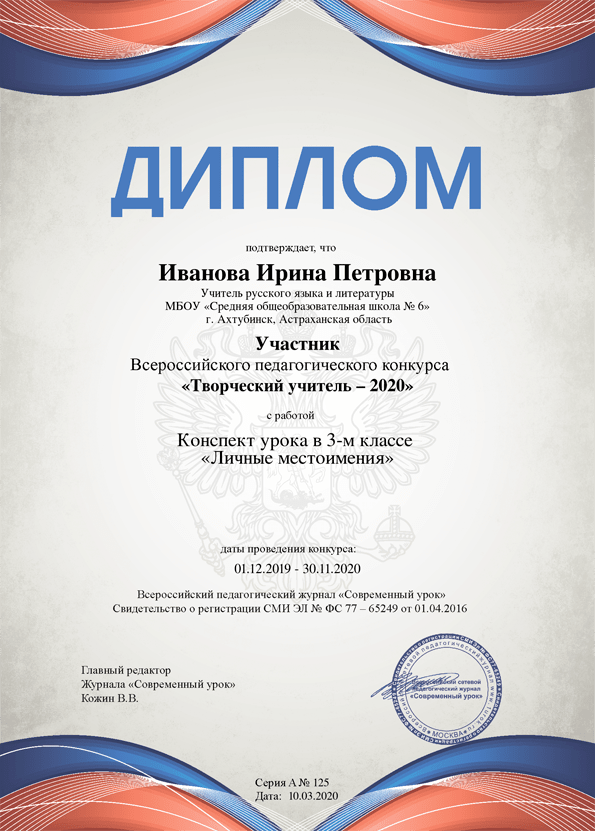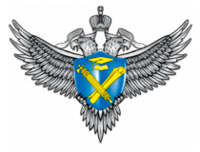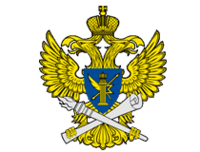Ученикам постарше тоже нужны физкультминутки!
Автор: Северинова Елена Юрьевна
Организация: ГБОУ СОШ №237
Населенный пункт: г.Санкт-Петербург
Автор: Северинова Анна Константиновна
Организация: ГБОУ СОШ №242
Населенный пункт: г.Санкт-Петербург
Ученикам постарше тоже нужны физкультминутки!
Внедрение здоровьесберегающих технологий началось в российских школах еще в 1991 году, когда В.Ф. Базарный предложил свою методику поддержания физического здоровья детей, в частности, в рамках физкультминуток [Базарный В.Ф. Официальный сайт]. Физкультминутки, в его понимании, были разделены на две группы – первые, в рамках которых дети двигались всем телом, и вторые, которые организуют движения глаз и / или мелких мышц кисти. Нужны они были как для поддержания здоровья в течение длительного периода обучения, так и для отдыха детей (мышечного, интеллектуального) в рамках урока.
Урок – серьезная нагрузка на ученика, который вынужден сохранять статичную позу, что вызывает напряжение в мышцах, в том числе, мышцах шеи и спины. С каждым годом костная система все прочнее, но и уроков у ребенка все больше, с 3 у первоклассника доя 7-8 у выпускника. Все больше объем домашней работы, что приводит к повышению нагрузки на глаза (и это мы еще не упоминали гаджеты!). В результате развиваются проблемы со зрением, осанкой (например, сутулость, кифоз, лордоз, плоская спина, сколиоз), суставами (неправильная осанка не дает позвоночнику правильно «работать» при движении, заставляет неправильно ставить ноги и руки, увеличивает нагрузку на колени, таз, лопатки, повышает риск перелома позвоночника), мышцами и сосудами (как результат, повышается давление, увеличивается риск возникновения заболеваний сердечно-сосудистой системы). Кроме того, увеличение времени сидения в статичной позе на уроке и при выполнении домашнего задания ведет к застою крови, проблемам с обменом веществ, избыточной массе тела, болях в мышцах. Необходимо отметить и тот факт, что при интенсивной самостоятельной работе дети не общаются, им труднее вступать и поддерживать социальные контакты со сверстниками. преодолеть эти проблемы и были призваны физкультминутки.
Однако в силу специфики научных интересов В.Ф. Базарный разработал свою систему в основном для начальной школы (дети находятся в одном кабинете, можно подстроить мебель под рост; ученики начальной школы непоседливы, потребность в движении ярко выражена вовне) [Базарный, 2011]. Тем не менее, старшим школьникам (8-11) не меньше необходимы физкультминутки, хотя они и в состоянии просидеть урок спокойно. Я провела опрос своих 34 одиннадцатиклассников, и в своих ответах они отразили потребность в движении в течение урока. Опрос проводился в рамках рефлексии после урока, на котором была использована форма физкультминутки «Эстафета».
|
|
1 – 19 человек (59,5%) сказали, что такая форма работы им понравилась, и они хотели бы ее использовать время от времени. 2 – 8 человек (24,5%) сказали, что такая форма работы им понравилась, и они хотели бы ее использовать на каждом уроке. 3 – 3 человека (9,5%) сказали, что такая форма работы им понравилась, но они рекомендуют разнообразить формы работы. 4 – 2 человека (6, 5%) сказали, что такая форма работы им не понравилась, и они бы хотели, чтобы их оставили в покое. |
Рис. 1. Ответ на вопрос «Хотели бы лично Вы чаше выполнять упражнение «Эстафета» на уроке.
Таким образом, можно утверждать, что подавляющее большинство обучающихся одобрило использование упражнение «Эстафета» (по сути – физкультминутки) на уроке.
Важно отметить, что в начальной школе перед физкультминуткой ставится задача не только дать детям возможность подвигаться, но и переключить внимание, отвлечься, ведь ученики начальной школы обладают не до конца сформированной произвольностью таких психических процессов как память, внимание, мышление. Поэтому содержание физкультминуток в начальной школе намеренно не привязывается к содержанию урока. В старшей школе же, наоборот, требуется выработка умения концентрироваться, поддерживать стабильное внимание, произвольность психических процессов. Таким образом, чтобы физкультминутка не мешала, ее содержание должно быть плотно связано с учебной темой и целью. Рассмотрим возможные варианты физкультминуток для детей постарше. Оговоримся, что автор приводит свои физкультминутки на уроках английского языка, где число учеников обычно колеблется от 12 до 18, но иногда возникает необходимость объединения (учитель параллельной группы отсутствует), и тогда занятие идет всем классом (до 36 человек).
I. Физкультминутки для движения всего тела.
1. ЭСТАФЕТА
Смысл этой физкультминутки в том, чтобы учащиеся сменили позу (встали) и походили по классу. Учитель организует задание следующим образом: «На последней парте находится документ (он скотчем приклеен к парте) и другие материалы (при необходимости). Задача каждой команды прочесть документ и используя информацию и дополнительные материалы, выполнить задание на доске. Говорить можно только шепотом.»

Пример 1. Задания, одинаковые по содержанию для каждой команды. Урок Culture Corner 6. Liquid [Английский в фокусе. Spotlight для 8 класса. 2023. с. 101].
Документ, прикрепленный на задней парте:

Дополнительные материалы: клей, ножницы, набор наклеек

На доске (или первой парте) помещается карта:

Задача команды – восстановить карту.
Пример 2. Задания, одинаковые по содержанию для каждой команды, но с разными конечными продуктами. На базе урока Writing Skills 2 (2e). [Spotlight 11, 2012, с. 36].
Документ, прикрепленный на последней парте:
1. You have 20 minutes to do this task.
You have received a letter from your English-speaking pen-friend Tom who writes:
… In our city we have an annual competition for teenagers who make their own short films. This year I got the second prize for a film about my grandparents. Do you think it’s important to record family history? Who do you think should do it? How can it be done best?
This month is my mom’s birthday and now I am thinking about a gift for her. I want it to be very special…
Write a letter to Tom. In your letter
- answer his questions - write 100 –140 words
- ask 3 questions about his project paper - remember the rules of letter writing
На первой парте линованный листок. Члены команды подходят и записывают строго по одному предложению.
Пример 3. Задания, разные по содержанию для каждой команды, но одинаковые по объему. Урок 5f. [Spotlight 9, 2023 с. 84]
Документ на задней парте: учебник.
20 минут отводится на повторение материала к тесту (словообразование, фразовый глагол, лексические единицы с предлогами (dependent prepositions).
Дополнительные материалы: не требуются
На доске (или первой парте) помещается задание:
Группа 1
1 Вставь в предложения слова, образованные от предложенных основ, выбирая правильный вариант приставки: dis, mis, over, re, under
|
1. Aunt Polly disliked Tom’s _____. |
behaviour |
|
2. Bettany returned to surfing notwithstanding her _____. |
ability |
|
3. I think I am ____ , the chief should pay me more money. |
paid |
|
4. Lupines are such a pain in the neck – they _____ the whole territory. |
grow |
|
5. The Tsar decided to ____ the ministry into two departments. |
organize |
2. Используй away, into, out of, over, through.
1. He was afraid he had run ___ a fox, but everything was OK.
2. I tried to catch Misha, but he ran ___ .
3. In the street I ran ___ a group of dangerously-looking boys.
4. The Earth will run ___ oil sooner or later.
5. You can’t do your role well without running it ___.
3. Используй at, for, in, to
|
This is the most expensive bracelet (named “Panther”) 1. ___ the Sotheby’s auction. In 2010 it was sold 2. ___£ 4,5 million. It is famous famous 3. ___ its connection to the British crown, special build and diamonds, onyxes and emeralds combination. Many people were interested 4. ___ the name of the buyer, but the person stayed anonymous. There is no information 5. ___add to this. |
Группа 2
1 Вставь в предложения слова, образованные от предложенных основ, выбирая правильный вариант приставки: dis, mis, over, re, under
|
1.We _____ plastic bottles to bring some water from the spring. |
use |
|
2. Chicken is _____ − it is raw inside. |
done |
|
3. Children in his family are in a great ___ − they even don’t have enough food! |
treatment |
|
4 . During the New Year Night streets are always _____. |
crowded |
|
5. I ____ with you, I can’t agree with this silly statement. |
agree |
2. Используй away, into, out of, over, through.
1. Children will run ___ the play tomorrow. 2. The astronaut ran ___ energy in his radio, he can’t send messages. 3. The child cried because his toy car ran ___ a frog. 4. The doctor ran ___ a serious problem operating appendix. 5. The gold antelope couldn’t run ___ from the lion and asked for help.
3. Используй from, in, on, with
Amber room was given to Peter I by the German monarch of that time. Peter brought it home and installed in Catherine’s Palace. In 1941 it was 1. ___ ruins because of the Nazi attack. The amber wall panels were covered with special materials to protect them 2. ___bombing. Amber room was taken from Russia. 3. ___ search of it, 40 years passed. Then the site was restored. Now it is constantly crowded 4. ___ tourists. You can rely 5. ___ the words, “it is a perfect copy”.
Группа 3
1 Вставь в предложения слова, образованные от предложенных основ, выбирая правильный вариант приставки: dis, mis, over, re, under
|
1. Albert, you have to ___ your essay, because it has so many spelling mistakes. |
write |
|
2. Mother, I didn’t mean it, it is only a ____! |
understanding |
|
3. My flat is on the ground floor and has no balcony, it’s a _____. |
advantage |
|
4. These vegetables are ____, they are almost burnt. |
done |
|
5. This pair of jeans is too little, it is _____. |
sized |
2. Используй away, into, out of, over, through.
1. Ballet dancers run their parts ___ many times. 2. Ben Gunn ran ___ good food so he could eat only goats. 3. His bike ran ___ a little snake. 4. I ran ___ Bella at the shop the other day! I haven't seen her since school! 5. In the forest I saw a mouse running _____ from a fox.
3. Используй by, in, of, with
|
Mosaic table “Apollo and Muses” was made on the basis of the painting 1.___ Edoardo Mokiutti. His artistic duet with Rinaldo Barbetti (who made the basis) resulted 2.___ a real masterpiece of applied art of the XIX century. The table is very popular 3.___ art lovers, because it combines Greek mythology, literature, applied and jewelry art, wood and stone carving. It is a part 4.___ a great collection of Western European furniture, but it stands separately because 5.___ the use of semi-precious and ornamental stones perfectly matched in colour. |
2. СВОБОДНОЕ ПЕРЕМЕЩЕНИЕ ПО КЛАССУ
В рамках данного упражнения каждый учащийся / пара учащихся получает рабочий лист, с которым ходит по классу и заполняет. Баллы начисляются как за скорость (первый выполнивший +5 баллов, второй - + 4 балла и т.п.), так и за правильность (например, 1 балл за каждый правильный ответ.
Пример 1. Задания, одинаковые по содержанию для каждой команды.
На базе урока Grammar 6 (6c). [Spotlight 10, 2012, с. 107]
Рабочий лист:
Прочтите приведенный ниже текст. Преобразуйте слова, напечатанные заглавными буквами в конце строк, обозначенных номерами В4–В10 так, чтобы они лексически соответствовали содержанию текста, добавляя приставки (co-, multi-, over-, pre-, re-, semi, super-, under-). Заполните пропуски полученными словами. Каждый пропуск соответствует отдельному заданию из группы В1–В16.
Multiculturalism (polyculturalism)
|
|
At first this term was used to talk about disadvantaged groups, including |
|
|
African Americans, women, and the disabled, many theorists focus on immigrants |
|
|
who are ethnic and religious minorities, or minority nations. |
|
B1 |
______________ relates to communities containing different cultures. |
|
|
The term is used in two ways. The first refers to the simple fact |
|
B2 |
of cultural ____________. It is often described |
|
B3 |
as a "cultural mosaic" or “salad bowl”. It focuses on ____________- |
|
B4 |
and ____________ between different cultures. |
|
|
The educational aspect of multiculturalism results in the fact that |
|
B5 |
school systems try to ____________ their curricula to introduce students to |
|
|
diversity earlier so that minority students can see themselves as a part of the class. |
|
B6 |
Students shouldn’t _________ about people on the basis of their nationality or any other. |
|
|
Multiculturalism will undermine the homogeneity of a society, |
|
B7 |
but it will enrich the minorities and the ______________ group |
|
B8 |
with a better ____________ of themselves. |
|
|
The second way describes ideologies or policies that promote this diversity in a |
|
|
state. This thought centers on diversity and cultural uniqueness. |
|
B9 |
It reflects an attempt to ___________________, |
|
B10 |
_______________ and adapt existing policies to turn different |
|
|
groups into a single political body. It is very important for a so |
|
B11 |
-called ___________. A ______________ is an agglomeration of nations and/or |
|
|
states, often linguistically and ethnically diverse, under a single political- |
|
B12 |
administrative structure. In such a state one nation mustn’t __________ other nations |
|
|
through military, political, and economic power. This concept is a "melting pot". |
|
|
Recently, some countries have reversed the national policy |
|
B13 |
and _______________ to an official monoculturalism so that all minority |
|
|
groups are unified by the super-position of the national culture. |
|
B14 |
They believe that the policy of polyculturalism is _______________ or |
|
B15 |
________________ by mass media. Politicians of these countries in their |
|
B 16 |
official and ______________ interviews share their experience in this field. |
Слова, развешанные в классе (каждое слово на отдельной карточке):
|
CULTURALISM |
FORMITY |
ORGANISE |
STATE |
|
DOMINANT |
JUDGE |
PRAISED |
TURNED |
|
DOMINATE |
OFFICIAL |
SIMPLIFIED |
VIEW |
|
EXISTENCE |
OPERATION |
STANDING |
WORK |
Задача: Пара учеников должна найти все 16 слов и вставить их в текст. Важно, что задание на словообразование будет выполняться после проверки лексики, когда учащиеся уже сядут за парты.
Пример 2. Задания, разные по содержанию для каждой команды, но одинаковые по объему. Урок Culture Corner 4. [Spotlight 8, 2023, с. 69].
Учащиеся разбиваются на 4 команды. Каждой команде выделяется разрезной лист (см. ниже), базовый лист, ножницы и клей.
На стенах класса висят 16 фотографий людей, одетых соответственно в национальные костюмы Англии, Шотландии, Уэльса и Ирландии. Каждая фотография подписана (England, Scotland, Wales, Ireland), но ни на одной фотографии не присутствуют все детали одежды. Только разыскав все 4 фотографии, команда способна выполнить задание.
ПРИМЕР 3. Индивидуальные задания.
|
88 |
|
На базе урока 88 для 11 класса Достопримечательности родной страны. Крупные города.
Учащиеся получают список вопросов и выбирают из списка 5 вопросов каждый. Затем учащиеся свободно ходят по классу, где в разных местах прикреплены 16 абзацев 4 текстов, находят и записывают ответы на вопросы.
Список вопросов:
1) How many stations does Novosibirsk Metro have? 2) Is New York or Moscow home to a larger number of billionaires? 3) Is the Moscow population bigger or smaller of that of Portugal? 4) What city is famous for a space object? 5) What city is nicknamed the ‘Athens of the Volga’? 6) What city was nicknamed "the Chicago of the Urals"? 7) What did Ivan the Terrible do to the city? 8) What happened in Novosibirsk in 1948? 9) What is the Ob Sea? 10) What Kremlin is a UNESCO World Heritage site? 11) What percent of Russian citizens live in Moscow? 12) Where is the biggest ferroalloy plant in Russia situated? 13) Where is the world’s largest medieval fortress situated? 14) Which city is nicknamed “Capital of Siberia”? 15) Which city stands on the border between the Urals and Siberia? 16) Which is the most populated city in the Asian part of Russia? 17) Which is the oldest city situated in Russia? 18) Which metal is mainly produced in Chelyabinsk? 19) Which Russian city is situated on seven hills? 20) Why is Kazan a great cultural hub?
Тексты:
|
About 9% of Russian citizens live in the capital city of Moscow. Moscow, which is the second-most populated city in Europe, is known for its rich culture and vibrant history. The population is believed to be between 13 million and 17 million as many undocumented immigrants live in Moscow. This is the population of Norway and Switzerland combined. Or Portugal and Estonia. Or Finland and Denmark. |
|
Akademgorodok is located 30 km south of the city center. It is the educational and scientific centre of Siberia. It is surrounded by a birch and pine forest on the shore of the Ob Sea, an artificial reservoir on the river Ob. Formally it is a part of Novosibirsk city, and has never been a closed city. Akademgorodok hosts Novosibirsk State University, 35 research institutes, a medical academy, living quarters, stores, hotels, hospitals, restaurants and cafes, cinemas, clubs and libraries. The House of Scientists, the social center of Akademgorodok, hosts a library, a picture gallery, lecture halls and a concert hall. |
|
As the capital of Tatarstan, Kazan is the cultural centre of the ancient Tatar people and was once nicknamed the ‘Athens of the Volga’. Now residents of the city speak both Russian and Tatar. Its cultural status has increased in modern times, as it is home to over 30 universities and over 40 museums and galleries. |
|
Chelyabinsk became a major trade center thanks to the trade between the European and Asian parts of Russia. Because of its rapid growth at the turn of the 20th century, similar to that of midwestern American cities, Chelyabinsk was sometimes called "the Chicago of the Urals". The Chelyabinsk Tractor Plant was built in 1933. During World War II, the city was a major contributor to the manufacture of tanks (18 000) and battle machines including T-34 tanks and Katyusha rocket launchers, 17 million units of ammunition. Chelyabinsk got the informal name of "Tankograd". |
|
Chelyabinsk is a Russian megapolis with a forest inside (92% of the trees are relict pines), which is considered to appear 10 000 years ago when the glacier melted. It is home to many rare species of plants. The city is bisected by the Miass River, which is regarded as the border between the Urals and Siberia. This is reflected in the geology of the area, with the granite foothills of the Ural Mountains to the west and the lower alluvial rock of the West Siberian Plain to the east. The Leningrad Bridge over the river is known as "the bridge between the Urals and Siberia". Like Rome, Constantinople, San Francisco and Moscow, Chelyabinsk is said to be located on seven hills. |
|
Chelyabinsk is the seventh-largest city in Russia with a population of almost 1.2 million people. The city, which was founded as a fortress by a Tatar on the site of Chelyaba, a small village in 1736 to defend caravans. The Chelyabinsk Electro-metallur-gical Plant is the biggest ferroalloy plant in all of Russia, and Chelyabinsk is also known for producing metal products, stainless steel, and zinc (60% of Russia's zinc and 2% of the world’s). Chelyabinsk has a high level of air pollution because of the numerous factories in the city. Chelyabinsk is the largest industrial, transport and cultural center of the Urals. |
|
Gorky Park is the Central Park of Moscow, with an attendance of more 100, 000 a day on the weekend. Moscow is the northernmost megacity in the world and the 11th most populated city on the Earth. The Moscow Kremlin is the world’s largest medieval fortress. |
|
Ice hockey was introduced to Novosibirsk in 1948 by Ivan Tsyba, who returned from a hockey seminar in Moscow with equipment to play the sport. Immediately popular amongst the populace, the local sports society, Dynamo, decided to establish a hockey team. |
|
In fact, Kazan is not only one of the oldest cities in Russia, but in Eastern Europe as well. It’s about 150 years older than Moscow (officially founded in 1005) as a part of the largest Mongol-Tatar empire in the world, the Golden Horde. Ivan the Terrible captured the city and brought it into the Russian Empire’s reign in the 16th century. |
|
Kazan’s Kremlin, as well as Moscow Kremlin, is a UNESCO World Heritage site with parts of the structure dating back to the 10th century. |
|
Kazan’s metro system has only one line which runs through 10 stops (a15 minute ride), making it one of the shortest metros in the world. It was constructed in 2005, and announcements are made in Tatar, Russian and English. In line with Moscow’s metro, the interior design of the stations are hugely impressive. |
|
Moscow boasts the largest number of billionaires in the world. According to the Forbes, there are 84 billionaires in the city with the combined wealth of 367 billion dollars. New York takes second place in this ranking with its 62 billionaire residents. Now Moscow announcing is very special: if you’re going toward the city center if you hear a male voice, and female voice if leaving the city center. |
|
Moscow is famous for its underground system (Metro). During the Great Patriotic War, Metro was used as a bomb shelter underground. Even during the war, new metro stations were built, in particular Novokuznetskaya, Paveletskaya, Baumanskaya, Elektrazovodskaya, Semenovskaya and Partisanskaya. 217 babies were born during the bombing. |
|
Novosibirsk is the third-most populated city in Russia with a population of about 1.6 million people. It’s the most populated city in Asian Russia and known for its manufacturing industry. Novosibirsk manufactures various equipment and machinery, vital to Russia’s economy. Now it is the most populated city in Siberia, as well as the region's cultural and educational hub now known as the “Capital of Siberia”. The city was founded in 1893 as a railway junction on the Trans-Siberian Railway. |
|
Novosibirsk Metro is a rapid transit system that serves Novosibirsk, Russia. The system consists of 15.9 kilometres on two lines with 13 stations. It opened in January 1986, becoming the eleventh Metro in the USSR. According to 2017 statistics, it is the third-busiest system in Russia behind Moscow and Saint Petersburg. |
|
On 15 February 2013, a superbolide meteor descended at over 55,000 kilometers per hour over the Ural Mountains, exploding at an altitude of 25. It was a 18 m in diameter, 10,000 ton asteroid. It produced a flash briefly brighter than the Sun. The explosion was 30 times more powerful than the atomic bomb detonated at Hiroshima. It is the largest known natural object to have entered Earth's atmosphere since the 1908 Tunguska event. |
II Физкультминутки для профилактики заболевания органов зрения.
Смысл такой физкультминутки в том, чтобы дети в течение незначительного времени сменили фокус, что снимает напряжение мышц глаза, обеспечивает более интенсивное их питание. Однако большинство физкультминуток либо представляют собой не связанные с темой занятия стихи, которые дети разучивают и читают, выполняя движения, указанные в стихотворении, либо набор команд, например, «Посмотри наверх-вниз 10-15 раз. Вращай глазами по часовой стрелке и против 10-15 раз.» (по материалам сайта https://www.ochkov.net/informaciya/stati/zachem-nuzhny-fizminutki-dlya-glaz.htm). Оба варианта не очень мотивируют детей. Поэтому предлагаю свои варианты физкультминуток для старших детей.
БУКВЫ. Смысл такой физкультминутки в том, чтобы дети переводили взгляд от буквы к букве.
Пример 1.
На передней стене кабинета необходимо повесить 10-12 букв на некотором удалении друг от друга, дети должны за 3-5 минут составить из них слова. побеждает тот ученик / пара / команда, которая составит больше слов по теме урока. Записывать слова нельзя.
Пример 2.
На доску вешается (или на доске рисуется) квадрат, заполненный буквами. Детям необходимо найти зашифрованное слово (или несколько) по теме урока.
СЛОВА. Смысл такой физкультминутки в том, чтобы дети переводили взгляд от слова к слову.
Пример 1. На передней стене кабинета необходимо повесить 10 слов, не обязательно напрямую связанных с темой урока. Дети должны найти такое слово, которое выражает смысл урока / текста.
Пример 2. На доске написан чайнворд (можно с дополнительными буквами). Дети должны в чайнворде найти слово, которое выражает смысл урока / текста.
Задания, одинаковые по содержанию для всех.
 |
На базе урока Culture Corner 6 (6g). стр 104 Учебник Эванс В., Дули Дж., Оби Б., Афанасьева О.В., Михеева И.В. Английский в фокусе. Spotlight для 11 класса общеобразовательных школ. М.: Просвещение, 2012 |
Задания, разные по содержанию.
 |
На базе урока для 10 класса Внешность человека, любимого литературного персонажа. Учащиеся делятся на 4 группы (hair. eyes, nose, forehead). Необходимо найти 2 слова по теме своей группы. |
КАРТИНКИ
Пример 1.
На базе урока Culture Corner 1 [Spotlight 10, 2012, с. 15]
Предъявляется аудиотекст к уроку (скрипт представлен ниже), необходимо прослушать три текста и найти иллюстрации к ним (выписать буквы). Иллюстрации помещены в разных частях класса.
Скрипт
John, 18
"I think I'm reasonably well-dressed. I usually wear comfortable clothes that show a little bit of individuality. I love skateboarding, so most days you'll find me in very baggy jeans, trainers and a hoodie; that's a sweatshirt with a hood for those of you who don't know! I'm not really bothered about brand names or logos. I tend to stick to cheaper clothes that won't rip when I fall off my skateboard!"
Amy (17)
"I love keeping up with all the trends. It's so easy to fashionable these days as lots of top designers make clothes for the cheaper, high street shops'. I spend too much time and money in all of them, but they are full of trendy, affordable clothes! So, what's a girl supposed to do? Hit the shops of course!"
Lisa (18)
"When it comes to fashion, I like to take my inspiration from many different places. Britain is a very multi-cultural place, so you see lots of different styles and trends all the time. I like picking up bargains at the street markets and second-hand shops. Then, I put these clothes together with things I have found on the high street. That way, I always stand out in a crowd! Young people today are so creative when it comes to fashion that pop stars are influenced by their style and not the other way round!"
Пример 2.
На базе урока Listening and Speaking Skills 8 (8b). [Spotlight 11, 2012, с. 140]
Задание: прослушайте диалог и выпишите номера иллюстраций, предметы на которых упомянуты в диалоге. (Это ticket, passport, window, seat, suitcase, boarding pass. На иллюстрациях дополнительно помещены passenger, airplane, seat belt, scale). Иллюстрации помещены в разных частях класса.
Список использованной литературы
- Сайт Базарный В.Ф. – электронный ресурс URL: https://www.bazarny.ru/contents-107-107-82.html (дата обращения 01.10.2025)
- Базарный В.Ф. Педагогика здорового развития ребенка / В.Ф Базарный // Народное образование. - 2011. - № 9. - С.54-60.
- Базарный, В.Ф. Официальный сайт [Электронный ресурс] / В.Ф. Базарный. Режим доступа: https://www.bazarny.ru/?ysclid=lbmav4crdz272670003 [дата обращения 10.12.2022].
- Ваулина Ю.Е., Подоляко О.Е., Эванс В. Английский в фокусе. Spotlight для 8 класса общеобразовательных школ. М.: Просвещение, 2023
- Эванс В., Дули Дж., Оби Б., Афанасьева О.В., Михеева И.В. Английский в фокусе. Spotlight для 10 класса общеобразовательных школ. М.: Просвещение, 2012
- Эванс В., Дули Дж., Оби Б., Афанасьева О.В., Михеева И.В. Английский в фокусе. Spotlight для 11 класса общеобразовательных школ. М.: Просвещение, 2012

